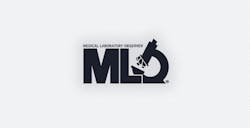Organizations representing laboratories are celebrating a major legislative victory with House passage of the Medicare Modernization and Prescription Drug Act. They are especially pleased because the measure does not call for a continuation of the freeze on Consumer Price Index increases for Medicare lab fees that has been in place since 1968.
The Senate hasnt yet taken any action on the legislation, which is designed to provide the nations seniors with a prescription drug benefit. It also would avert a series of projected Medicare cuts for physicians, nurses, and other health professionals.
Organizations such as the American Association of Bioanalysts (AAB) say the House bill (HR 4954) represents a good start. It is a marathon process, and this is just the first quarter of the race, says Mark Birenbaum, Ph.D., administrator of the AAB.
Elissa Passiment, executive vice president of the American Society for Clinical Laboratory Science, says, We are hopeful that the CPI update will survive both chambers of Congress.
If the Senate goes along with the House version, labs will see a CPI increase in the Medicare Part B fee schedule on Oct. 1, the start of the new fiscal year.
Nevertheless, the legislation still has some problems, says Birenbaum. For one thing, the bill does not include an increase in the specimen collection fee. Groups representing laboratories have been pushing hard for an increase in the fee from the current $3 to $5.25.
At some point, laboratory groups will ask Congress to attach a specimen collection fee increase provision to the Medicare bill. The Senate side is where it (a specimen fee increase) would have to be added on this year, Birenbaum predicts.
The House-passed Medicare bill also directs the General Accounting Office (GAO) to undertake a study comparing the differences between public and private payer rates for clinical laboratory services. The study is expected to determine whether Medicare is paying more or less than the private sector is paying for laboratory tests, he explains.
Birenbaum says the biggest problem with this provision is that the GAO would be performing the study rather than the Institute of Medicine. Because the IOM recently completed a big study on laboratory payment policies, he adds, it is the agency that should do any additional studies.
In addition, Congress has not given up on the issue of competitive bidding for procurement of Medicare laboratory testing services. Both Congress and the Centers for Medicare and Medicaid Services (CMS) believe competitive bidding is one possible way to reduce costs to the Medicare program. Competitive bidding is a method for setting the price of healthcare services through a bidding process to establish payment rates based on the lowest price submitted by providers.
Fortunately, the House-passed Medicare bill only calls for a competitive bidding demonstration project and not a full-blown competitive bidding program, says Birenbaum. Under the bill, a report on the project must be delivered to Congress no later than Dec. 31, 2004.
Once the Senate passes its version of the bill, a conference committee will iron out the differences. Birenbaum says a final measure could be ready for President Bushs signature in fall 2002.
CMS releases report on relative value system for lab fees
CMS continues to study ways to establish a single national fee schedule for laboratory services, which was recommended by the IOM report on the current payment system for reimbursement of outpatient laboratory tests under Medicare Part B.
As part of this effort, CMS recently released a report on the feasibility of establishing a relative value system (RVS) for Medicare laboratory fees. A RVS would be designed to accurately reflect the relative costs of different laboratory services.
Under a properly designed RVS, laboratories would receive greater reimbursement for tests that cost labs more to perform and are more expensive to bring to patients. For example, a simple glucose test would receive a smaller reimbursement than a tumor marker, which is more expensive to run, say laboratory sources.
In fact, the CMS report found that a RVS could cause major changes in payment rates for certain individual laboratory procedures. However, the report indicated that a RVS would not bring about redistribution of dollars between independent laboratories and physician office labs, or across clinical lab specialties or regions.
In addition, the study recommends that if CMS decides to put a RVS in place, it should move gradually to ease in the major payment swings that would impact individual procedures.
Groups representing laboratory interests are still reviewing the report and eventually will offer their reactions and comments. Researchers involved in preparing the report say additional study is still required, including creation of methodology that would set payments for new laboratory tests.
© 2002 Nelson Publishing, Inc. All rights reserved.







